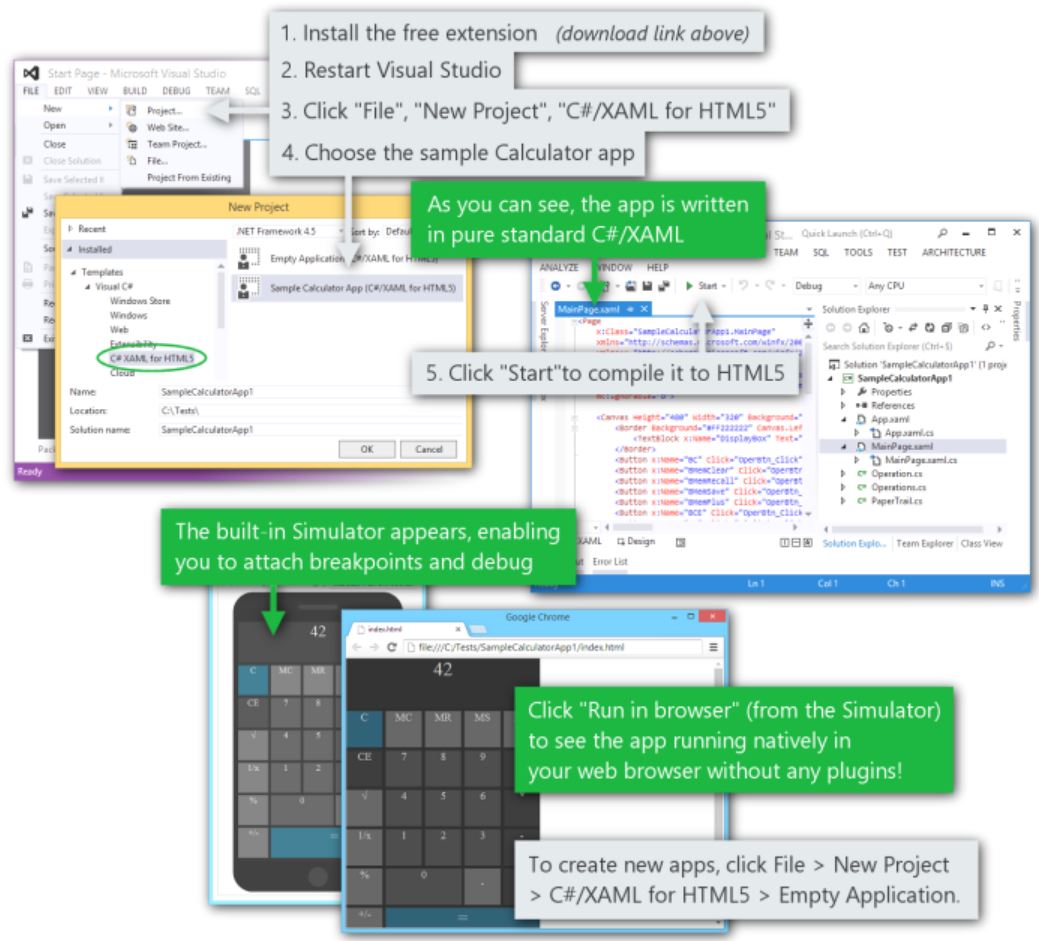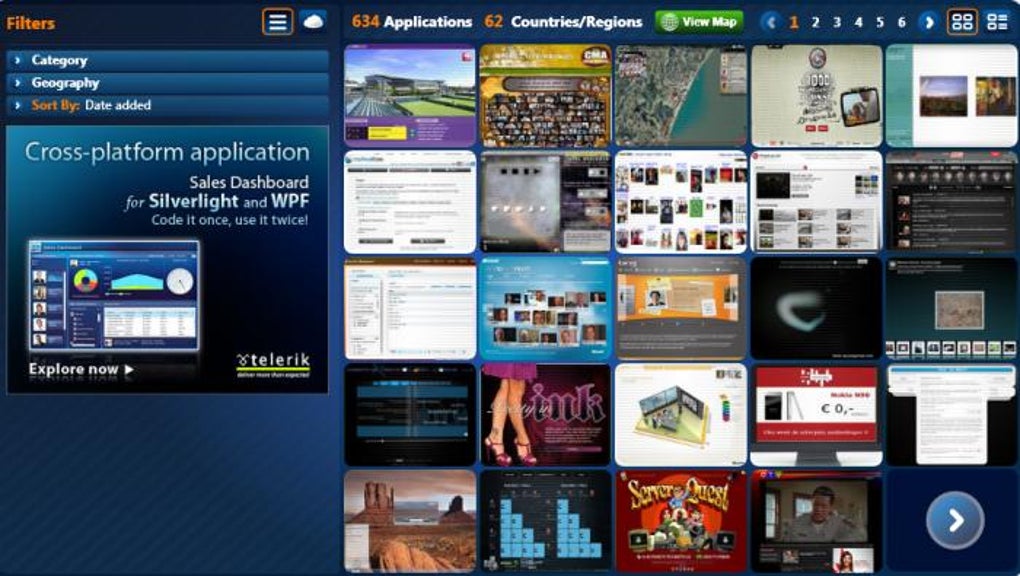Microsoft Silverlight is a programmable web browser plugin that enables features such as animation, vector graphics and audio-video playback so you can experience rich Internet applications. Silverlight offers a flexible programming model that supports AJAX, VB, C#, Python, and Ruby, and integrates with existing Web applications.
- The Microsoft.SharePoint.Client.xap contains copies of the Microsoft.SharePoint.Client.Silverlight.dll and Microsoft.SharePoint.Client.Silverlight.Runtime.dll files. You need to add only a small amount of code to your Silverlight applications to dynamically load this application at runtime.
- The Official site of Microsoft Silverlight. Download and install the latest version Microsoft Silverlight plug in for your browser.
Description
Esri is removing security policy files from ArcGIS Online that are used by the ArcGIS API for Flex on January 26, 2021, and for the ArcGIS API for Silverlight on October 12, 2021.
This means that after these dates, Flex and Silverlight apps can no longer access any content and/or services from ArcGIS Online. Furthermore, due to security vulnerabilities associated with running Flash, Adobe no longer supports Flash as of December 31, 2020, and is taking steps to block Flash-based apps from running altogether.
Cause
The ArcGIS API for Flex and the ArcGIS API for Silverlight were retired in June 2016. However, Esri kept these policy files accessible so developers who wanted to continue to use their deployed Flex and Silverlight apps could access content and services on ArcGIS Online:
- crossdomain.xml - for Flash-based clients
- clientaccesspolicy.xml - for Silverlight-based clients
These resources are being removed to protect customers from security vulnerabilities; in line with Adobe, Microsoft, and major browser vendors:
- Adobe will actively block Flash content from running in Flash Player beginning January 12, 2021.
- According to Adobe, “Adobe does not intend to issue Flash Player updates or security patches. Therefore, Adobe will continue to prompt users to uninstall Flash Player and strongly recommends that all users immediately uninstall Flash Player.”
- According to Microsoft, “Flash will be completely removed from all browsers by December 31, 2020, via Windows Update” (KB4577856).
- Google Chrome is removing Flash in January 2021.
- Firefox is removing Flash Jan 26, 2021.
- Safari disabled Flash in Sept 2020.
- Per Microsoft, Silverlight support will end 10/12/2021.
Solution or Workaround
If you have a Flex- or Silverlight-based app in production, Esri highly encourages migration to a JavaScript-based app using the ArcGIS API for JavaScript. The ArcGIS API for JavaScript is the focus of Esri’s web-based development and innovation, and far exceeds the capabilities of the older Flex and Silverlight APIs on many fronts.
Related Information
- Microsoft Docs: Adobe Flash end of support on December 31, 2020
- Microsoft Docs: Silverlight end of support on October 12, 2021
- Flash Roadmap - The Chromium Projects: Google Chrome is removing Flash in January 2021
Last Published: 1/7/2021
Article ID: 000024962
Software: ArcGIS API for JavaScript 4.9, 4.8, 4.7, 4.6, 4.5, 4.4, 4.3, 4.2, 4.18, 4.17, 4.16, 4.15, 4.14, 4.13, 4.12, 4.11, 4.10, 4.1, 4.0, 30.326, 3.35, 3.34, 3.33, 3.32, 3.31, 3.30, 3.29, 3.28, 3.27, 2.x, 1.x ArcGIS API for Silverlight 3.x, 2.x, 1.x
-->by Walter Oliver
Introduction
Microsoft SilverlightTM is a cross-browser, cross-platform plug-in for delivering the next generation of .NET-based media experiences and rich interactive applications for the Web. Silverlight offers a flexible programming model that supports AJAX, VB, C#, Python, and Ruby, and integrates with existing Web applications. Silverlight supports fast, cost-effective delivery of high-quality video to all major browsers running on the Mac OS or Windows.
In most cases, hosters do not need to perform particular deployments to support Silverlight. However, check for the following basic items that could prevent Silverlight from functioning correctly.
MIME Types

IIS in Windows Server 2008
All MIME types needed to support Silverlight are implemented by default in IIS 7 and above in Windows Server 2008 and Windows Vista SP1. Windows Vista customers can add MIME types by running IIS Manager, clicking MIME Types, then clicking Add, and then adding the following MIME types:
- .xap application/x-silverlight-app
- .xaml application/xaml+xml
- .xbap application/x-ms-xbap
Alternatively, you can add the following MIME types to your %windir%system32inetsrvconfigapplicationHost.config file in the <staticContent> section.
In Windows Server 2003 IIS 6.0
To enable IIS 6.0 in Windows Server 2003 or IIS 7 in Windows Vista with the appropriate MIME Types, add:
- .xap application/x-silverlight-app
- .xaml application/xaml+xml
- .xbap application/x-ms-xbap

Here is a VBS script you could run to enable each of these types:
Microsoft Silverlight Application Download
If you copy and paste the code above into a VBS file and save it as ADDMIMETYPE.VBS, the syntax to add each type would be:

Using the IIS Manager User Interface in IIS 6.0 in Windows Server 2003
Download Silverlight App
Go to StartAdministrative Tools and run IIS Manager. See the figure below:
Right click on the server name and select Properties. See the figure below:
In the Properties dialog box, click MIME Types. See the figure below:
In the MIME Types dialog box, click New. See the figure below:
In the MIME Types dialog box, enter one of these MIME types:
.xap application/x-silverlight-app
.xaml application/xaml+xml
.xbap application/x-ms-xbap
See the figure below:
Microsoft Silverlight Review
For detailed information on Silverlight, visit http://silverlight.net/.
